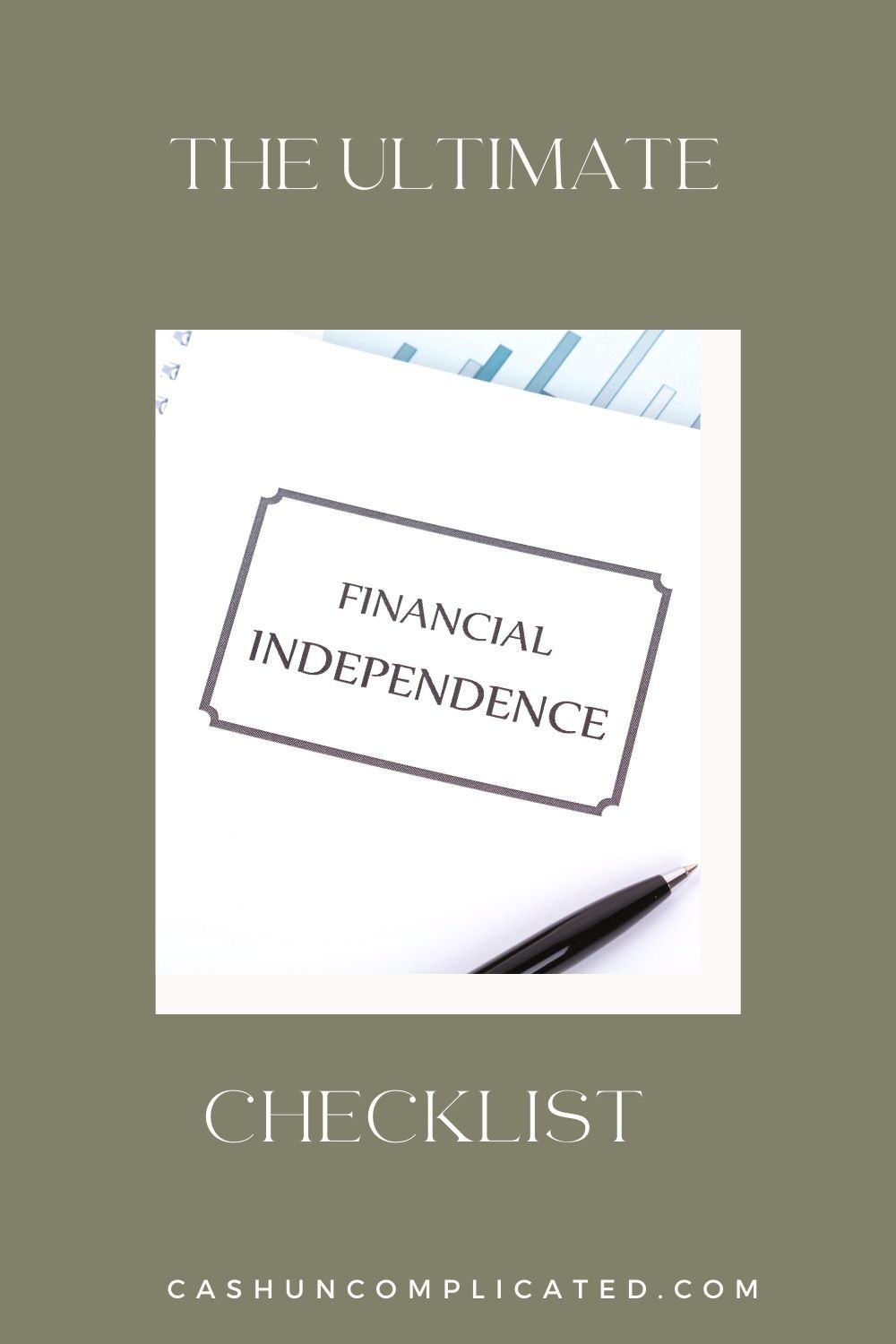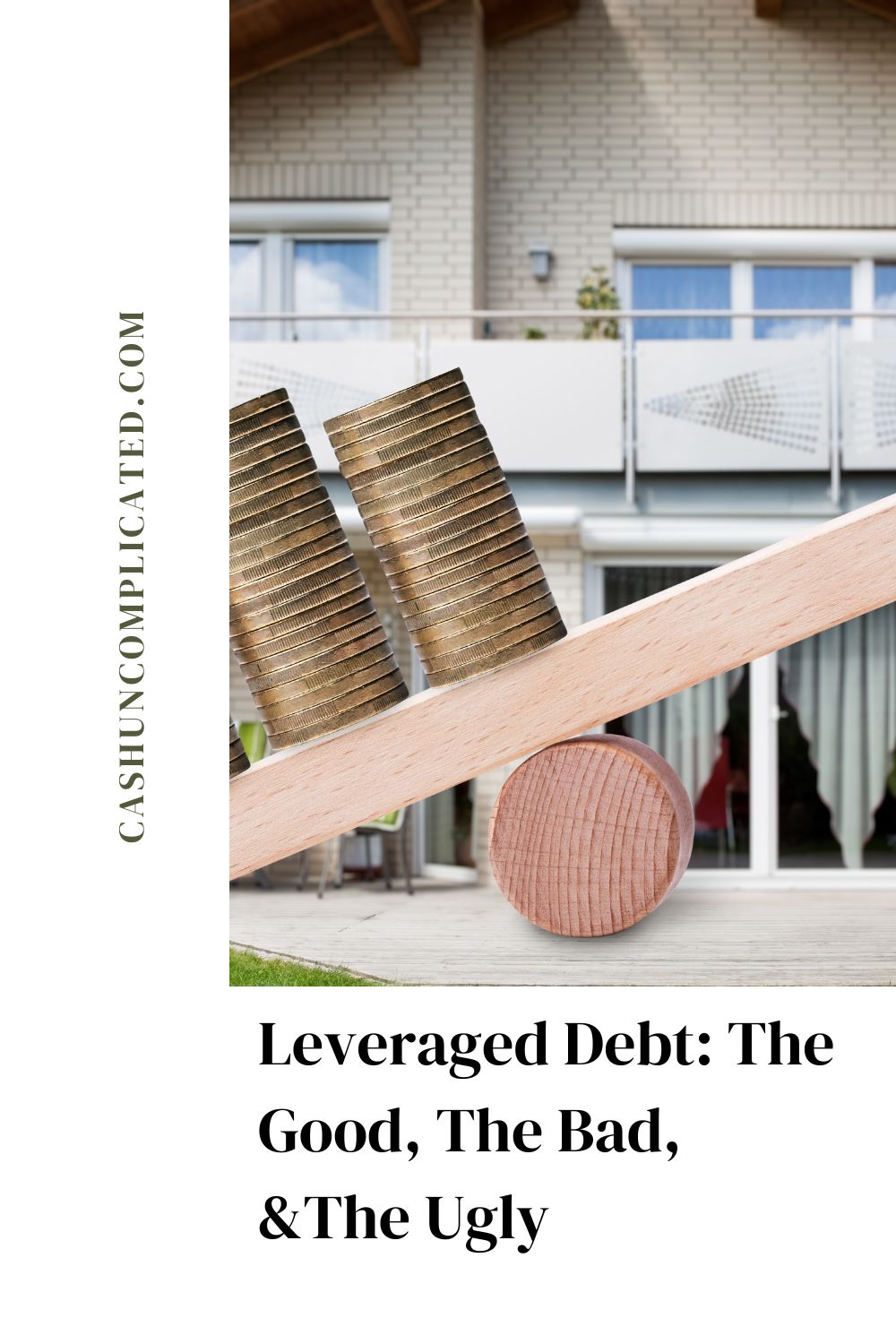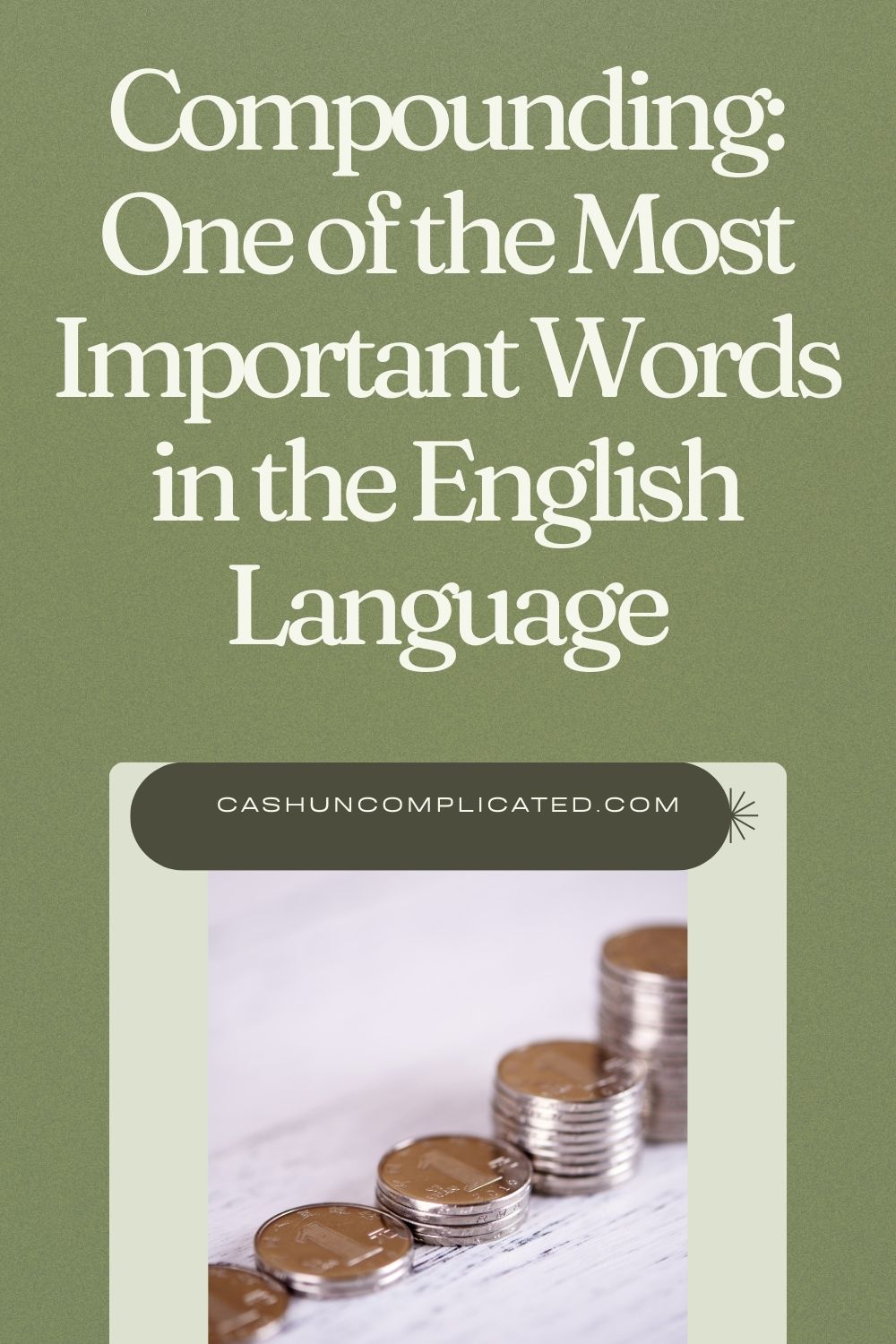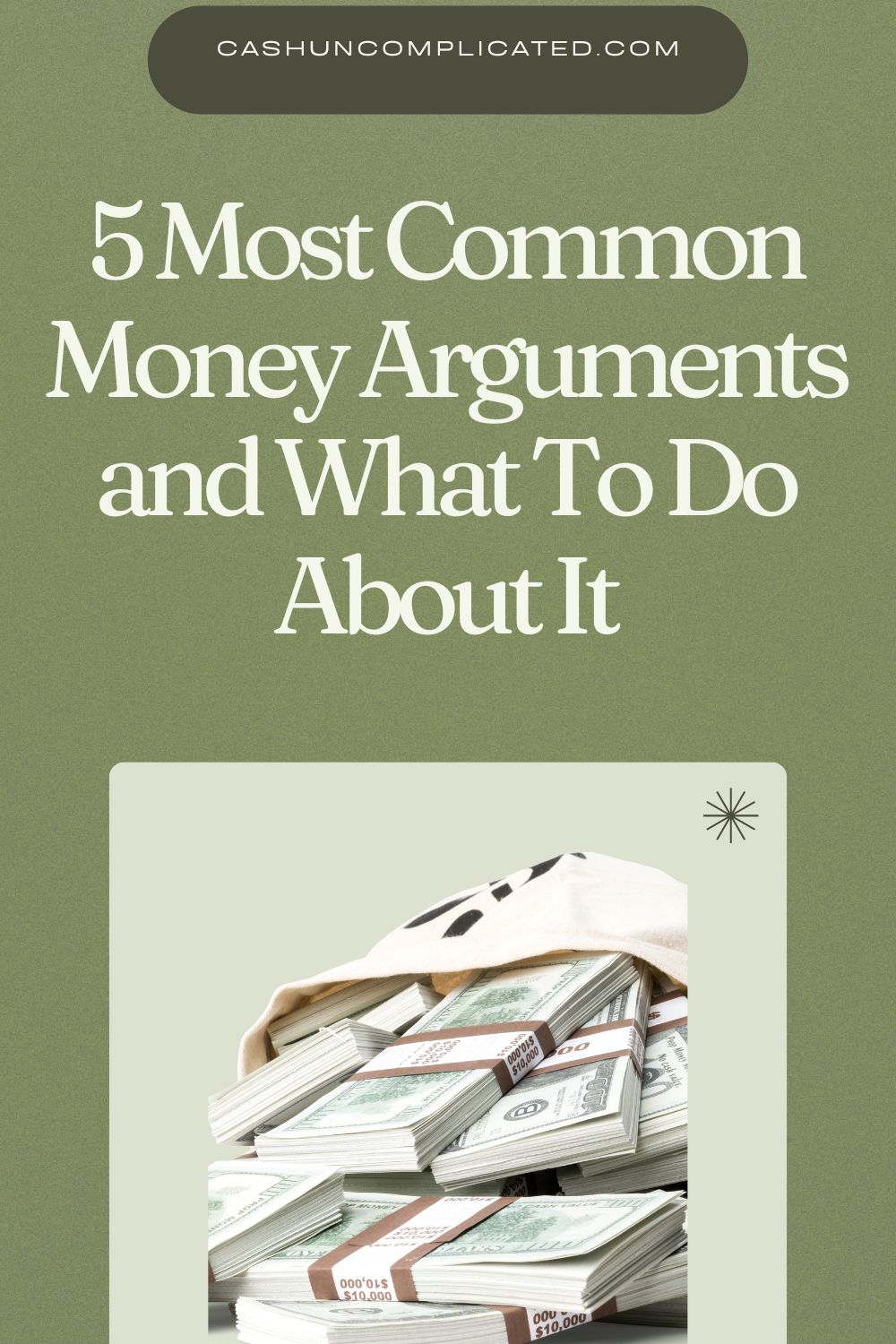Financial independence is often talked about, not always understood. It’s called a variety of things–financially independent, retired, financially secure, etc. To keep things uncomplicated (kind of my mission), I created a short, easy to navigate financial independence checklist.
What is Financial Independence?
Before we dive in too deep, it’s important to provide a clear definition of financial independence. Financial independence is when all expenses are paid for without having to work to generate income. Or in other words, passive income from investments creates enough income where work is no longer necessary. Optional, but not mandatory.
For example, a person who generates $7,000 of passive income per month with only $5,500 in expenses is financially independent. They have a monthly surplus of $1,500. An individual who generates $5,000 in passive income but has $6,000 worth of expenses is not financially independent. They are close, but they still have a $1,000 gap.
How to Start
It can be a little intimidating to get started on the journey to financial independence. Especially if you’ve had early financial struggles like I did for many years. Remember, no situation is permanent and getting started is a big part of the battle.
Taking action isn’t going to look the same for everyone. For some, taking action begins with education and slow, progressive, actions. For others, taking action is diving right in. How you take action is up to you, there really isn’t a one-size-fits all way to do it. I personally began by reading books such as Rich Dad Poor Dad and Richest Man in Babylon. Eventually progressing to other books like The Millionaire Next Door and Your Money or Your Life.
I supplemented the books with podcasts and blogs along with trying out some of the principles on my own. From there, I was off to the races which included writing my own personal finance book Cash Uncomplicated.
Know that you will make some mistakes. There will be highs and lows, but it’s all part of the process. The great thing about taking action is that you are not only making progress, but also learning as you go. The idea is to keep learning and getting better, ultimately allowing you to reach new personal finance heights.
The Financial Independence Checklist
The financial independence checklist is designed to be easy and simple to use. Take a screenshot on your phone or print out a copy–whatever works best for you.
Number 1: Assess Values
It’s hard to set goals if you don’t know where you are going. Begin by asking yourself some questions.
- What do you want?
- List top 5 values
- Why is financial independence important to you?
- What will you do once you are financially independent?
- Who will you give your time to once you are financially independent?
- Are there people you would like to help on your journey to financial independence?
Once your values are clear, the process becomes much easier. A clearly defined set of values helps you establish your why. And once you have a strong why, you are likely to be much more motivated to achieve your goals.
A clear set of values also helps with spending. If you know what you want and why, you are likely to spend according to those values. I call this value-based spending. Value-based spending is one of the core financial principles I have followed, and it has guided me through my spending choices.
Number 2: Make a Plan and Set Goals
Now that you have your values written down, it’s time to make a plan and set goals based on your values. If you goal is to retire by the age of 45, make a plan to accomplish this goal. Set long-term, medium-range, and short-term goals.
If you wrote down that you value extra time with family, create a plan to make that happen. Find a way to work less hours and set clear boundaries when you’re working from home. Be fully engaged with your family and minimize anything unscheduled that interrupts that time.
Make sure to be patient with yourself. Just because you value a certain thing doesn’t mean you are going to get it immediately. The important thing is to create a plan to get what you want and take daily actions to move closer to that goal. It can take days, weeks, months, and more than likely–years.
Number 3: Get Frugal
Number three on the financial independence checklist is to get frugal. Frugality is the easiest and fastest way to save and invest more because the only thing you need to change is your spending habits. You don’t need to change jobs or move to another part of the country. You just need to spend less than you currently are.
Following the principles of value-based spending will greatly help in your frugality efforts. Value-based spenders naturally spend on necessities and what they value and avoid everything else. Combining value-based spending and frugality is a very powerful combination–and in a lot of ways they feed off each other.
Lastly, while you’re living frugally, begin looking for ways to increase your income. Living frugally allows you to take more career and investment risks because your daily living doesn’t cost as much as others. Ultimately, the most powerful way to build wealth is by increasing income. Frugality only goes so far, but it’s a very powerful springboard to bigger and better things.
Number 4. Create a Small Emergency Fund
You’re going to need a little bit of money for the unexpected that inevitably comes up. The car breaks, water heater goes out, and a trip to the emergency room are just a few of the many examples of things that can, and do go wrong. You may not be at the stage where you can have a fully-funded emergency account yet but it’s important to start a small one.
How much you need is really up to you, the stability of your income, and your comfort level. Some personal finance experts recommend a few thousand dollars to start. Dave Ramsey recommends $1,000 to start, building it up later as debt is paid off. I’m somewhere in the few thousand-dollar range, which gives you sufficient funds to cover common emergencies.
Related:
- How Much of an Emergency Fund Should You Really Have?
- Why the Pandemic Prompted Me to Increase My Emergency Fund
Number 5. Set Up Automations
This is an important step not to be overlooked. And once you set it up, you just need to maintain and adjust as necessary. That step is to automate. Automate your investments, savings, vacation fund, and anything else you want to save for.
Automation is very important for several reasons–the most important being it’s the best way to pay yourself first. Most people pay their bills first, spend money on entertainment, weekend trips, and various things. Paying yourself first means exactly what it sounds like.
Every month before you pay your bills or buy necessities, you pay yourself first. That means allocating a certain percentage of your income to an investment account, savings, and any other funds you value. The more you can automate into investments, the better. Ideally 20 percent or more.
In the beginning, (especially if you still have consumer debt) you won’t be able to contribute quite this much but that amount will increase as the debt is paid off. More to come about increasing investments later in the post.
After you pay yourself first, you will learn to live on the rest. And after a few months, you barely notice the money missing. The real magic happens as the money begins to compound over long periods of time. That 20 percent or more you have been paying yourself first suddenly begins to compound at unstoppable rates, creating a clear path to financial independence.
Number 6. Eliminate Consumer Debt
Step six of the financial independence checklist is to eliminate consumer debt. Not necessarily all debt, but definitely consumer debt. A big part of personal finance is creating a solid base or foundation.
Consumer debt creates a shaky foundation that is hard to build upon. Conversely, a foundation without consumer debt is strong and can absorb the inevitable financial challenges that will come up in everyone’s life.
One of the other reasons I’m so passionate about eliminating consumer debt is that it’s hard to pay yourself first when you’ve got scheduled consumer debt every month. Consumer debt means that X amount of your monthly income has to go to that debt payoff. That’s consistent monthly income that is being taken out of your pocket and put into someone else’s.
The elimination of consumer debt means that money goes back to where it belongs–in your pocket to pay yourself first and fund your life.
Number 7: Build a Fully Funded Emergency Account
The fourth step of the financial independence checklist is to build a small emergency fund. Step seven takes the emergency fund to another level. It’s the step on the checklist where you want to create a nice sized emergency fund.
How big of an emergency fund is up to you. Many of the personal finance experts recommend between three to six months, more for those with unstable or unpredictable incomes. I give my opinion in this post.
Without getting too deep into how many months of expenses you should keep, there are a few factors to consider:
- What amount will help you sleep better at night?
- Do you have other sources of income (passive, spouse, family members living with you, etc.)?
- How much can you trim expenses if you were to lose your source of income?
Again, there’s not necessarily a right or wrong answer. I agree with most personal finance experts in that three to six months is a good amount. I don’t like going lower than that, and going higher means that money is not being invested.
Number 8: Increase Investments
At this point in the checklist you’ve got the automations set up, consumer debt paid off, and a nice sized emergency fund. Plus, you’ve assessed your values and are living according to those values. It’s a great place to be.
Now it’s time to increase investments. The good news is you’ve already done a lot of the heavy lifting because your systems are in place. All you have to do is add more money as you make more money. For simplicity sake, let’s use an even number: $100.
Suppose you have been automating $500 per month for the past several months into an investment account. You then get a raise of $100 per month. What to do with the money? Automate it!
Add the $100 to your existing $500 and now you have $600 per month you’re investing. Now imagine you get another $100 raise the next year. Move the $100 over to your investment account and you build your investment contributions to $700 per month. Repeat this process with each pay increase and all of a sudden you are investing in the thousands every single month.
Bonus: Review Insurance
Not to be forgotten, but very important–review your insurance policies. Periodically check to make sure you are properly insured. Asset prices (especially real estate) have rapidly increased over the past couple years. If you haven’t updated your insurance policies, you might not be adequately covered.
For example, if your house has increased in value from $750,000 to over a million in the past couple years, you’ll want to make sure your insurance reflects that price increase. I’m not an insurance expert so make sure to contact your insurance company for professional guidance.
Conclusion
The financial independence checklist doesn’t have to be complex or complicated. Start with the basics–assess your values, make a plan, and get frugal. Then create a small emergency fund, begin automating, and pay off consumer debt.
Follow that up by fully funding your emergency account, then increase your investments. And don’t forget the bonus of periodically reviewing your insurance policies. If you’re just starting, you’re not going to finish it the entire checklist in a few months. Take it step by step and give yourself time to get it done.
What’s on your financial independence checklist?











